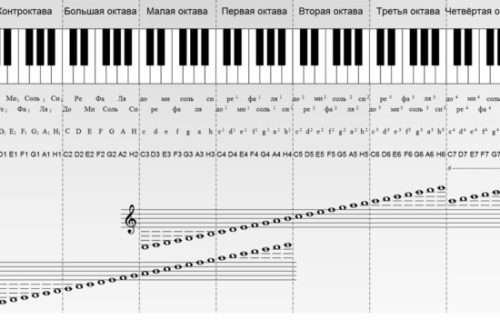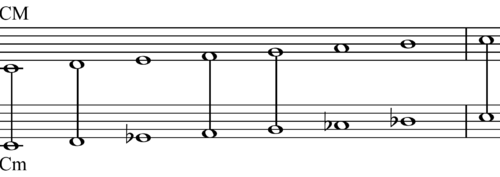
About the pentatonic scale
Contents
It takes a lot of study to become a great guitarist. If you ask the well-known masters of the six-string musical instrument, they will all unanimously say that without constant practice it is impossible to play virtuoso. No matter how talented a person is by nature, he should definitely learn the experience of previous generations, learn theory and polish practice.
One of the techniques that every beginner guitarist learns is to play the pentatonic series. As the name implies, the pentatonic scale is an interval sequence of notes, but not seven, as in standard scales, but five.
Solo parts are constructed on it in various musical genres where the guitar is used.
A bit of history
The five sounds are a very ancient musical sequence. It is believed that it came to European music from the East. It was first used in China. The exact dating is not known, but at the beginning of our era, musical compositions using the pentatonic scale were widely used in the Chinese musical tradition. Following China, the five-sound interval sequence was adopted by the Japanese. The pentatonic scale can also be heard in the folk art of the Mongolian and Turkic peoples. In the opposite part of the globe – among the Andean Indians – a significant layer of musical and song creativity is based on the pentatonic scale.
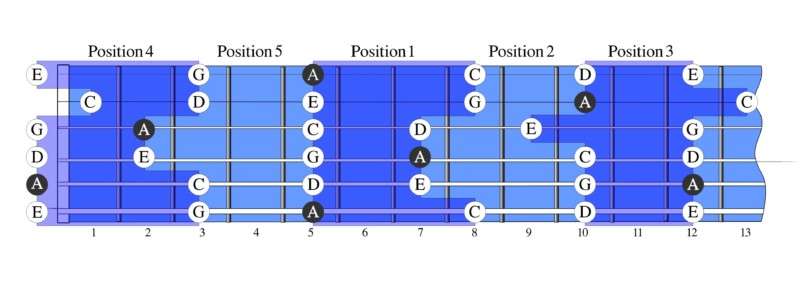
In classical European music, an appeal to a five-step interval system, where sounds are arranged in pure fifths or fourths, was most often used to give color to archaic and “folk” compositions.
What is the pentatonic scale for?
Based on this scale, many solo and melodic parts of guitar music are built. Knowledge of the pentatonic scale allows the musician to freely, effectively and interestingly improvise, combining the base notes of the row with the near-sounding ones. The pentatonic scale is most widely used in the blues style . However, it is also found in rock and metal. The pentatonic scale was used by Ritchie Blackmore, Yngwie Malmsteen, Jimmy Page, and Zach Wild generally prefers to build his solos exclusively on five-tones.
The classical guitar school insists on the obligatory study of pentatonic. And although some teachers express a skeptical attitude towards it, there will only be benefits from studying it.
Use in different styles
 In its pure form, the pentatonic scale is used in folk -rock – melodic solos with its use on an acoustic guitar give the music a special flavor. The ballad use of the sequence at a low and medium tempo is appropriate .
In its pure form, the pentatonic scale is used in folk -rock – melodic solos with its use on an acoustic guitar give the music a special flavor. The ballad use of the sequence at a low and medium tempo is appropriate .
As a basis for parties, the pentatonic scale has become a blues classic . A lot of well-known songs and the very spirit of this musical direction make pentatonics an essential element in the training of a beginner bluesman .
The five-step interval system has become widespread in new branches of heavy music – heavy metal, gothic, alternative. In the weighted version, the pentatonic scale is often played with triplets, which gives the party dynamism and speed.
For example, this is how Metallica’s permanent guitarist Kirk Hammett uses the five-tone sound.
How is the pentatonic scale built?
If you are already familiar with scales, then it will be much easier for you. The construction of the pentatonic scale is simple: two steps are removed from the minor and major scales of the natural scale. The result is five notes instead of seven: do, re, mi, sol, la.

Five positions of the pentatonic scale on the guitar
The position of the pentatonic scale is the location of the set of notes of the scale on the fretboard of the guitar with the layout in frets . With the help of pentatonic positions, the guitarist learns the basic placement of the sounds that make up the interval system on the instrument.
As a result of the lessons, the player will be able to “blindly” find the necessary sequences of notes without error, and then beat them, adding features of improvisation and including neighboring notes.
The positions of the pentatonic scale are located within 12 frets , but the number of variations played is not limited to this – you can start over again, raising the pitch by an octave, and once again walk around the entire fretboard .
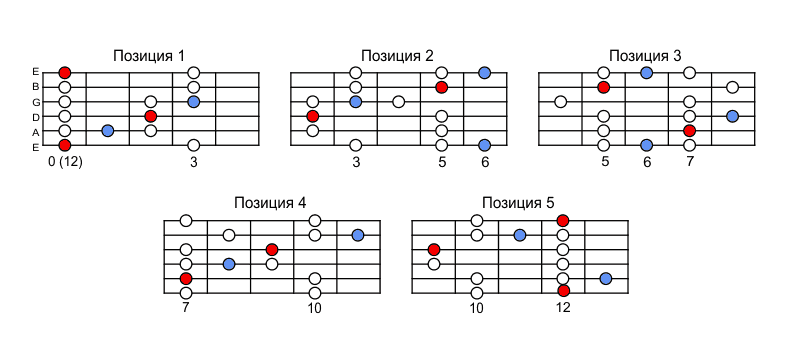
When setting the left hand, it should be noted that each fret has its own finger. Therefore, the guitarist simply needs to train the stretch of the fingers, which is especially useful on the first frets , which are wider.
The right hand can be played in two ways:
- Pick om, moving up and down on each note, the learning tempo is about 50 bpm.
- Finger picking.
Fingering
Fingering is the position of the fingers on the fretboard for playing pentatonic sequences. There are a lot of fingerings for playing five sounds, but among them there are basic, basic ones, which are called boxes.
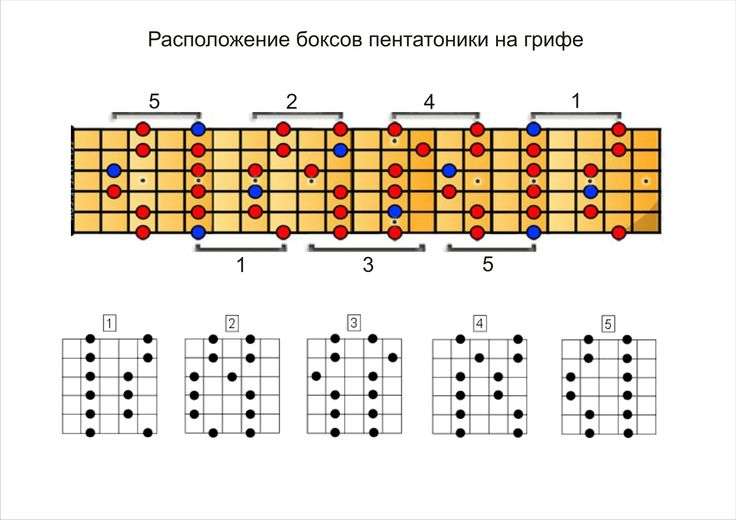
Usually there are five boxes of major and minor pentatonic scales. The serial number corresponds to the degree, according to which the fingering is built.
When learning the boxes, you should play them from the first to the fifth. You need to move on to the assimilation of the next one, having fully mastered the execution of the previous one.
Having mastered several boxes, the guitarist can make transitions between them using legato and glissando techniques. Outside of the educational process, boxes are rarely played in full – most often these are separate fragments connected to the general course of the musical theme.
Types of pentatonic
There are two main types of pentatonic scale: major and minor .
Minor pentatonic scale
The pentatonic scale in la- minor is considered classical for study and performance . CAGED construction system. The boxes of the minor pentatonic scale indicate its playing in different keys. When reading minor boxes, bright (or colored) dots indicate the tonic, black (or unfilled) – all other notes of the scale.

Major pentatonic scale
It is played in G major, the positions are built in the same order as in minor : CAGED. When playing major boxes, one can move into another. Thus, the guitarist beats the pentatonic scale, moving all over the fretboard , which gives wide performing possibilities, including within the framework of improvisation.
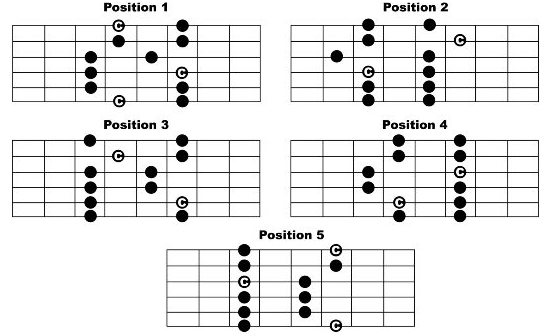
Pentatonic Tabs
When recording a solo part using the pentatonic scale, tablature is traditionally used. And if in textbooks, for clarity, the clamping of strings on the fretboard e is indicated by dots, then in generally accepted tablature, only the numerical designation of the fret a, on which the string is clamped, is used.
The duration of the sounding notes when playing the pentatonic scale tends to equal values, however, in the case of a longer sound, several hyphens are used to separate the string plucks, instead of one.
In most legal systems, tablature is not regulated by copyright laws, so they are freely distributed on the Internet.
Conclusion
A huge variety of solo parts is based on generally accepted musical techniques. The ability to play fresh and interesting is largely due to a brilliant knowledge of theory and mastering the practical foundations. The pentatonic scale is one of those. Even in the reference form, it may sound appropriate. If you learn how to skillfully beat it, then you can achieve success in playing the guitar in a number of musical genres.



